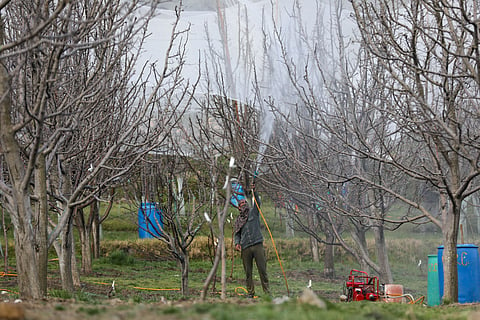
Apple farmers in Himachal Pradesh are increasingly turning to anti-hail nets to protect their orchards, saying the measure has significantly reduced crop damage caused by unpredictable hailstorms.
In a region where horticulture is a primary source of livelihood, especially apple cultivation, the adoption of such protective techniques is becoming more common in response to erratic weather patterns.
Farmers report that hailstorms, which often strike during the crucial fruit development stages, have led to substantial losses in recent years. By installing anti-hail nets over their trees, they say they are able to minimise the physical impact of hailstones, preserving both the quality and quantity of the fruit.
Although the initial cost of installing these nets can be high, particularly for small-scale farmers, many believe the long-term benefits outweigh the investment. Some have received partial support from government schemes aimed at promoting climate-resilient farming practices. Others have pooled resources through cooperative models to share expenses and technical know-how.
Agricultural experts agree that anti-hail nets can be effective, but caution that they are not a complete solution to the challenges posed by climate change. They emphasise the need for integrated approaches, including better weather forecasting, crop insurance, and diversification of income sources.
Nevertheless, for many apple growers in Himachal Pradesh, the nets represent a practical step toward securing their harvests against the increasing threat of extreme weather events.
For now, the sight of orchards draped in protective netting has become a common feature across apple-growing regions, a visible response to the changing climate on the Himalayan foothills.